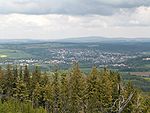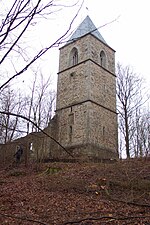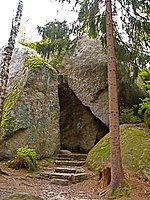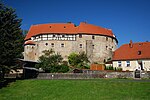Bad Alexandersbad
Municipalities in BavariaSpa towns in GermanyUpper Franconia geography stubsWunsiedel (district)

Bad Alexandersbad is a municipality of Germany in Oberfranken (Bavaria), in the district of Wunsiedel. Population (2020): 977. The municipality consists of the villages Dünkelhammer, Kleinwendern, Sichersreuth and Tiefenbach.
Excerpt from the Wikipedia article Bad Alexandersbad (License: CC BY-SA 3.0, Authors, Images).Bad Alexandersbad
Am Kurpark, Tröstau (VGem)
Geographical coordinates (GPS) Address Nearby Places Show on map
Geographical coordinates (GPS)
| Latitude | Longitude |
|---|---|
| N 50.016666666667 ° | E 12.016666666667 ° |
Address
Am Kurpark 3
95680 Tröstau (VGem)
Bavaria, Germany
Open on Google Maps








